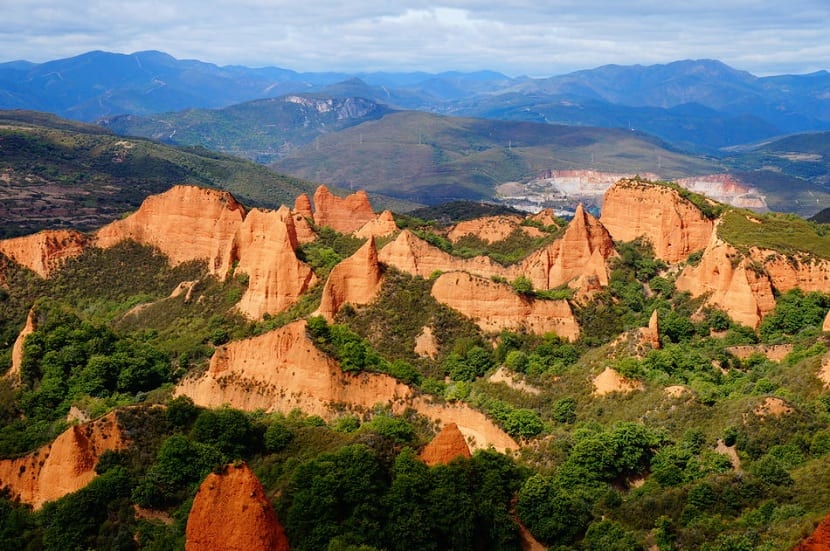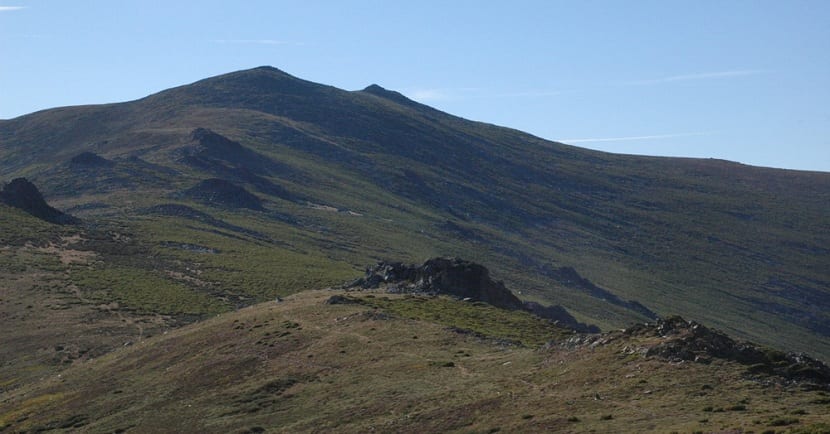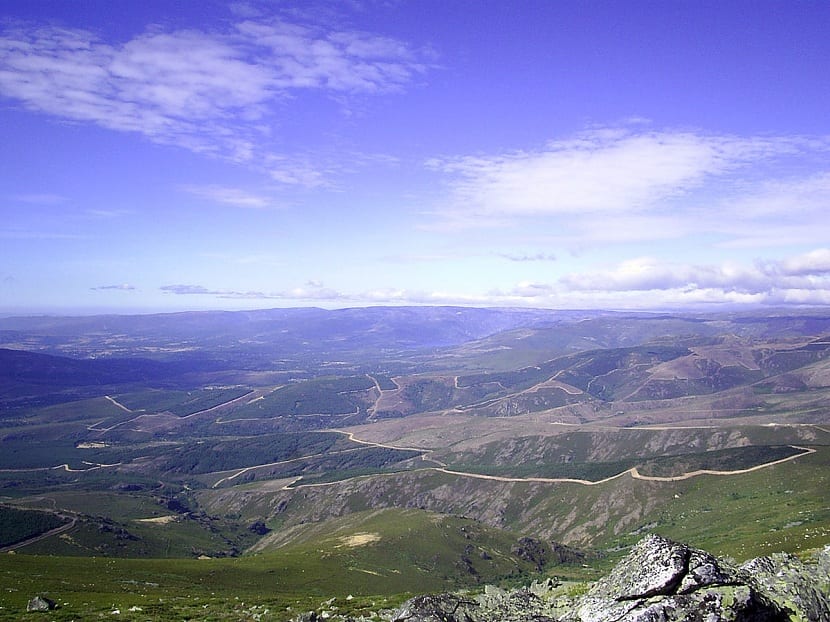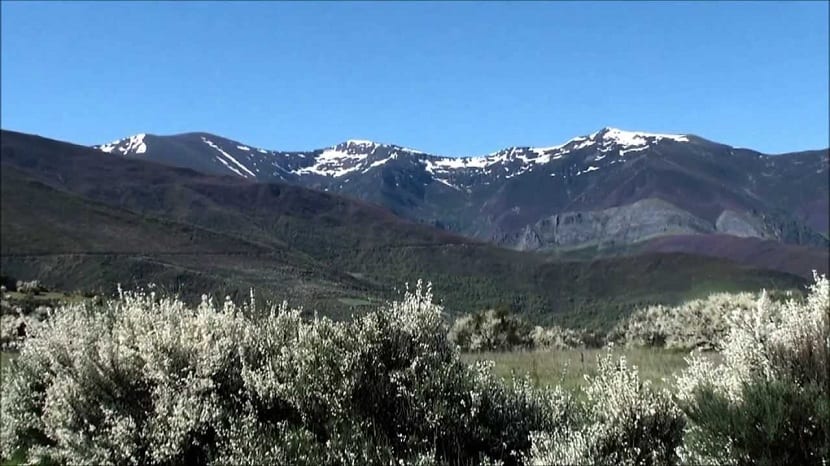
The Leon Mountains They are mountain ranges that act as a connection between the North Submeseta, the Galaico Massif and the Cantabrian Mountains. These are places with beauty and a landscape worth seeing. Like other natural environments in Spain, the Montes de León are a popular tourist destination due to their natural wealth. It has a large number of peaks and mountains that are worth visiting.
Here we are going to explain in great detail everything you need to know about the Montes de León and the most important characteristics of each peak and each mountain range.
Characteristics of the Montes de León

These mountains are part of a bulging of the base that is part of the Iberian massif. This orogeny was fractured to give rise to all this wealth. The mountains it has are quite high blocks, but whose tops are not very pronounced. These types of mountains with soft peaks are called horts. The peaks with maximum heights are 2.000 meters. The good news is that these peaks are surrounding a rift valley called Bierzo. This pit has materials from the Sil River mountains that have been eroded.
Its main peak is Teleno and it has a maximum height of 2.188 meters. On the Montes de León, the erosion of ice and wind has acted for millions of years. This has created a glacial relief modeling. It is known as the most extensive glacial relief in Spain and is located in the Lake Sanabria region.
Now we are going to analyze the main characteristics of its most important peaks and mountains.
Aquilian Mountains
It is a mountainous formation that is within the Montes de León. It is located in the El Bierzo region. The Cabrera river stands out on its southern slope Oza on the north slope and the Compludo river. It is the area that is best preserved and the river waters are very clean and free that have hardly been touched by the hand of man. Thanks to the existence of these rivers it has been possible to allow the existence of different riverside forests, along with a large tree mass.
The forests that form next to the rivers have species of oaks, holm oaks, chestnuts and reboñales. Among the fauna, the golden eagle, the wolf, the otter and the desman stand out.
The mountains are nearly 2.000 meters high. Among which are Monte Irago, Pico Becerril, Cabeza de la Yegua, Pico Berdianías, Meruelas, Llano de las Ovejas, Funtirín, Pico Tuerto, Cruz Mayor, Pico Tesón and La Aquiana.
Sierra Second

It is a mountainous complex that belongs to the Montes de León. In this mountain range are the Jares and Bibey rivers and the Esla cenca with the Tera river. In its morphology we find important traces of the ice age that existed in the Quaternary and that has left marked on the rocks. Mountains were covered during glacial periods by ice. These layers of hundreds of meters of ice have been exerting strong pressure and managed to excavate the basin where the Sanabria Lake is located. The peak that stands out the most is the Moncalvo with a height of 2.044 meters.
This area stands out with a climate whose winters are quite cold and where rainfall is higher and snowy. Temperatures on the coldest days are capable of reaching -20 degrees. They have strong blizzards of water and snow in winters and summers are short, but with pleasant temperatures. During spring and autumn there is usually a lot of humidity, fog and rainy days.
Regarding its vegetation, we find a remarkable wealth of arboreal and shrub species such as: bramble, heather, broom, oak, birch, hazel, alder, ash, holly, rowan, yew and chestnut. It also has the presence of large fauna with specimens such as roe deer, wild boar, otter, badger, polecat and wolf, among other vertebrates.
Mountain range of Cabrera

It is located between the provinces of León and Zamora. The mountain range is between the regions of Sanabria and La Carballeda. All of them form the Montes de León massif together with the rest of the peaks and mountains.
It is one of the main centers of glacierism that existed in the Quaternary on our peninsula. Glaciers developed on the summits where tongues of ice descended. Hence, they have large lakes such as Baña, Truchillas and Sanabria.
The peaks are usually around 2.000 meters high and it has a mountain climate that is characterized by long and very cold winters. Frosts in winter are usually strong accompanied by blizzard with water and snow. The highest areas are made up of large expanses of snow and ice.
Summers are more pleasant in terms of temperature but they are very short. The highest temperatures do not exceed and sometimes exceed 30 degrees. It is true that the nights are somewhat cooler. The snowfields they frequently persist on the summits. Due to its proximity to the Atlantic Ocean, there are heavy rainfalls with annual averages ranging between 1.200 mm and 1.800 mm. In summer it has some short but frequent dry spells.
Sierra de la Culebra

It is a mountainous complex that is located in the northwest of the province of Zamora and the autonomous community of Castilla y León.
The climate it has is continental Mediterranean type. We find ourselves with cold and long winters whose temperatures are always below 10 degrees. Frosts and fogs are frequent, although these to a lesser extent. Summers are short but warm with temperatures hovering above 20 degrees. There is a fairly pronounced temperature range between day and night. That is to say, the days are warm and the nights are cold even though it is in summer.
As you can see, the Montes de León is full of peaks and mountains where we find a characteristic climate and rich biodiversity. I hope that with this information you can enjoy these places more.
